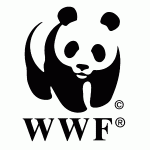Mangrove forests, seagrass meadows, saltwater marshes – these and other ‘blue forests’ are vital to coastal and island communities around the world
The Blue Forests Project Mozambique intervention, implemented through WWF-Mozambique, conducted several studies mostly focused on the Zambezi River Delta, the largest mangrove area in Mozambique. This project aimed to promote better management of coastal ecosystems by harnessing the values associated with ecosystem services and carbon.
The main studies conducted under the Blue Forests Project were carried out in partnership with national academic institutions such as Eduardo Mondlane University or through specialized consultants (click here to access these resources). Results of the studies have contributed to increased understanding of the value and importance of mangroves including blue carbon and ecosystem services which is crucial to improve protection and management of these important coastal ecosystems.
Mozambique

Pathway: Understanding the value of ecosystems
The National Mangrove Management Strategy identifies the national targets to be met (restoration of 5000 hectares by 2022), as well as the priorities for mangrove management in Mozambique, highlighting the need for effective management involving all mangrove ecosystem stakeholders and considers blue carbon as a way to implement a sustainable finance mechanism for mangrove conservation.

Pathway: Economy opportunities
A rapid ecological-economic-livelihood assessment methodology to calculate the monetary value of mangroves, considering both its use and non-use values, direct and indirect use, was applied. The economic valuation techniques used considered the cost-based of replacement, effects on production and damage avoided.

Pathway: Policy and management approaches
The Action Plan within the National Mangrove Management Strategy identifies the specific actions that the Government of Mozambique proposes to be developed in order to achieve national and international objectives and commitments, one example is the National Mangrove Restoration Program which will be launched on the 26th of July 2021 and is an opportunity to disseminate the Mangrove Strategy, mobilize stakeholders to engage in its implementation, improve guidance on restoration initiatives as well as create awareness on the importance of this ecosystem.

Pathway: Community engagement
The policy recommendations for the sustainable use of mangroves is suggested to be implemented in Bairro Hospital and Bairro Amarelo, in Chinde Sede and in Pambane, and assigned a household for managing one hectare of mangroves. Thus, this involves about 281,074 households and is supervised by Community Mangrove Management Committees. It is recommended that the Natural Resources Committees or Mangrove Management Committees be established, trained and empowered to effectively oversee the implementation of the mangrove management plan.


Project Location

What are the key pathways
to reach these goals?

What are the goals of the Mozambique
Blue Forests Project?
This graphic illustrates the various pathways featured within the Blue Forests Project Mozambique. Click on each pathway icon to learn more.
Facts at a Glance
Ecosystem Benefits
-
Blue carbon and ecosystem services included in the national mangrove management plan
Chinde District
Chinde is a district of the province of Zambézia, with its headquarters in the village of Chinde. To the north, it borders the district of Mopeia, while to the west the district of Marromeu in the province of Sofala, and to the south and southeast it borders the Indian Ocean. The Chinde District is a remote region in central Mozambique where the Blue Forests Project is located within the mangrove forests of the Zambezi Delta. In the District of Chinde, approximately 2250 hectares (ha) of mangrove forests were deforested over three years between 2010 (34810 ha) and 2013 (32560 ha). As a result of the anthropogenic pressure on such coastal forestry resources, vast areas were established for charcoal production (ovens) with the sale of a charcoal bag for 150 mt (meticais). This also results from the strong demand for timber for construction of houses, whose main destination is the City of Quelimane and other villages such as Pambane, Chinde VIllage, Marromeu, Luabo.
Coastal erosion and charcoal production areas (ovens) are the main environmental impacts affecting the District of Chinde, with a lower intensity in terms of pressure on fishery resources, the impact of fishing gear such as beach seine net, longline and a local fishing

gear with very fine mesh named chicocota; and finally unsustainable agricultural practices such as cassava production as the main crop. The lack of a Mangrove Monitoring and Management Program and fundamentally the implementation of a Reforestation Plan places such coastal forestry resources vulnerable to climatic changes and anthropogenic impacts. A total of 312.4 ha were identified as deforested areas during the field work and interpretation of aerial photos including approximately 294 ha in the proposed Community Conservation Area in the South Bank of the Zambezi Delta and 18.4 ha between Chinde and Nhaimbo community villages.











